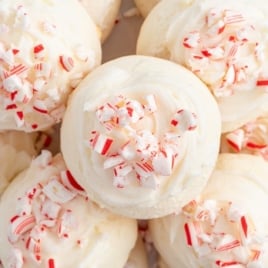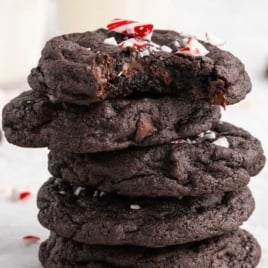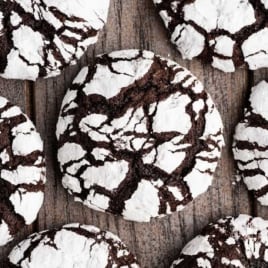There’s something magical about meringues —they melt on your tongue and leave behind the perfect whisper of sweetness. They look like something straight from a patisserie, yet they’re surprisingly easy to make. I’ve baked more batches of meringue cookies than I can count, and this recipe strikes the perfect balance—easy, reliable, and foolproof.

How to Make Meringues
I’ve learned the hard way that meringues can be temperamental—too much heat, sugar not quite dissolved, and suddenly you’ve got chewy instead of crisp. After many rounds of testing and refining, I’ve settled on this method that consistently gives bakery-quality results at home.
The key is starting with a gentle heat to dissolve the sugar completely before whipping. That way, you get a glossy, stable meringue with none of that grainy texture that can sneak into less careful recipes.
Only 5 Ingredients Needed

- 4 large egg whites
- 1 cups granulated sugar
- ¼ teaspoon cream of tartar
- Pinch of salt
- ½ teaspoon vanilla extract
Ingredient Notes
Egg whites – Fresh eggs whip up best, but older eggs actually give you more volume because their proteins loosen over time. If you’re after picture-perfect swirls, go with fresh eggs. Always separate them cold, then let them sit to room temp before starting.
What to do with leftover egg yolks? Since this meringue recipe will leave you with leftover egg yolks, you can store them in an airtight container in the fridge for up to four days. Use them in scrambled eggs or an omelet so they don’t go to waste.
Expert Tips
Check for sugar grit before whipping. When whisking the egg whites and sugar over simmering water, rub a bit between your fingers—if you still feel grains, keep whisking. Dissolving fully at this stage prevents weeping (those sticky syrup droplets that form later).
Stable peaks start with cream of tartar. Adding it right at the beginning helps stabilize the egg whites so they can hold their structure once whipped. This is especially important in recipes like ours that bake low and slow.

Keep the water simmering, not boiling. The steam should gently warm the bowl, not cook the egg whites. If the water boils too hard, you risk scrambling the edges of the mixture instead of dissolving sugar evenly.
Start slow, finish strong. Begin whipping on low speed before gradually increasing. This gives the egg whites a chance to form a tight, fine structure—resulting in glossy, stable stiff peaks instead of large bubbles that collapse.

Pipe quickly after whipping. Meringue mixture starts to lose volume if it sits too long. For the best swirls, transfer it to the piping bag and shape onto the trays right away.
Don’t peek during baking. Opening the oven door lets in moisture and interrupts the steady drying environment. Trust the process—low heat and patience will give you the crunch you’re after.

Cooling in the oven is non-negotiable. Leaving the cookies inside after baking allows them to finish drying slowly. If you rush this step, the centers can stay tacky.
Customizing Meringue Cookies
Classic meringue cookies can easily be changed into different flavors by adding a few drops of an extract flavoring — mint extract, lemon extract, almond extract, etc. Add a drop of gel food coloring to the mixture to tint your meringue cookies any color you’d like.
Christmas Tree Meringues
Meringues look beautiful on a holiday cookie tray, make thoughtful edible gifts, and are always one of the first treats to disappear at Christmas gatherings.

Note – Add nonpareils and sprinkles before baking — while the meringues are still soft so they stick.
Storage Instructions
Humidity is the enemy of meringue cookies. Store them in a sealed container on the counter, never in the fridge (the moisture will ruin them). If your kitchen is especially humid, add a small packet of food-safe silica gel or a few grains of uncooked rice wrapped in cheesecloth to help absorb excess moisture.
More Christmas Cookie Recipes
- Christmas pinwheels
- Jello Divinity
- Church Window Cookies
- Twix Cookies
- Ooey Gooey Cookies
- Shortbread Cookies
- Italian Cookies

Meringue Cookies
Ingredients
- 4 large egg whites
- 1 cups granulated sugar
- ¼ teaspoon cream of tartar
- 1 pinch salt
- ½ teaspoon vanilla extract
Instructions
- In a heat-proof mixing bowl (preferably the metal bowl of a stand mixer), add the egg whites, granulated sugar, cream of tartar, and a pinch of salt.
- In a separate saucepan (small enough that the metal bowl can rest over the water, but not fall in), bring a couple inches of water to a low boil.
- Carefully set the mixing bowl with egg whites and sugar over the boiling water (similar to a double boiler). Whisk the egg whites until the sugar is completely dissolved (about 2 minutes). Rub a bit of the mixture between the pads of your fingers, you should not feel any sugar granules.
- Add the vanilla to the egg white mixture.
- Place the mixing bowl on the stand mixer. With the whisk attachment, beat the egg white mixture, starting on low speed and working up to high speed, until stiff peaks form (about 3-5 minutes).
- Transfer the whipped meringue to a piping bag fitted with tip #1M.
- Preheat the oven to 200°F. Line two baking sheets with parchment paper.
- Pipe swirls onto the parchment paper, about 1 inch apart.
- Bake for 1½ hours, then turn off the oven, leaving the door closed and the cookies inside for an additional 1 hour.
- Meringue cookies are very susceptible to moisture/humidity in the air. After removing them from the oven, allow to cool (this should only take 10-15 minutes) and then immediately transfer to an airtight container (I like to use a Ziploc baggy.) Store in a sealed airtight container on the countertop for up to one week.
Notes
- Oven temperatures vary and may need to be recalibrated periodically to ensure they are accurate. Make sure to keep a close eye on your meringues as the suggested baking time approaches.















Leave a Comment